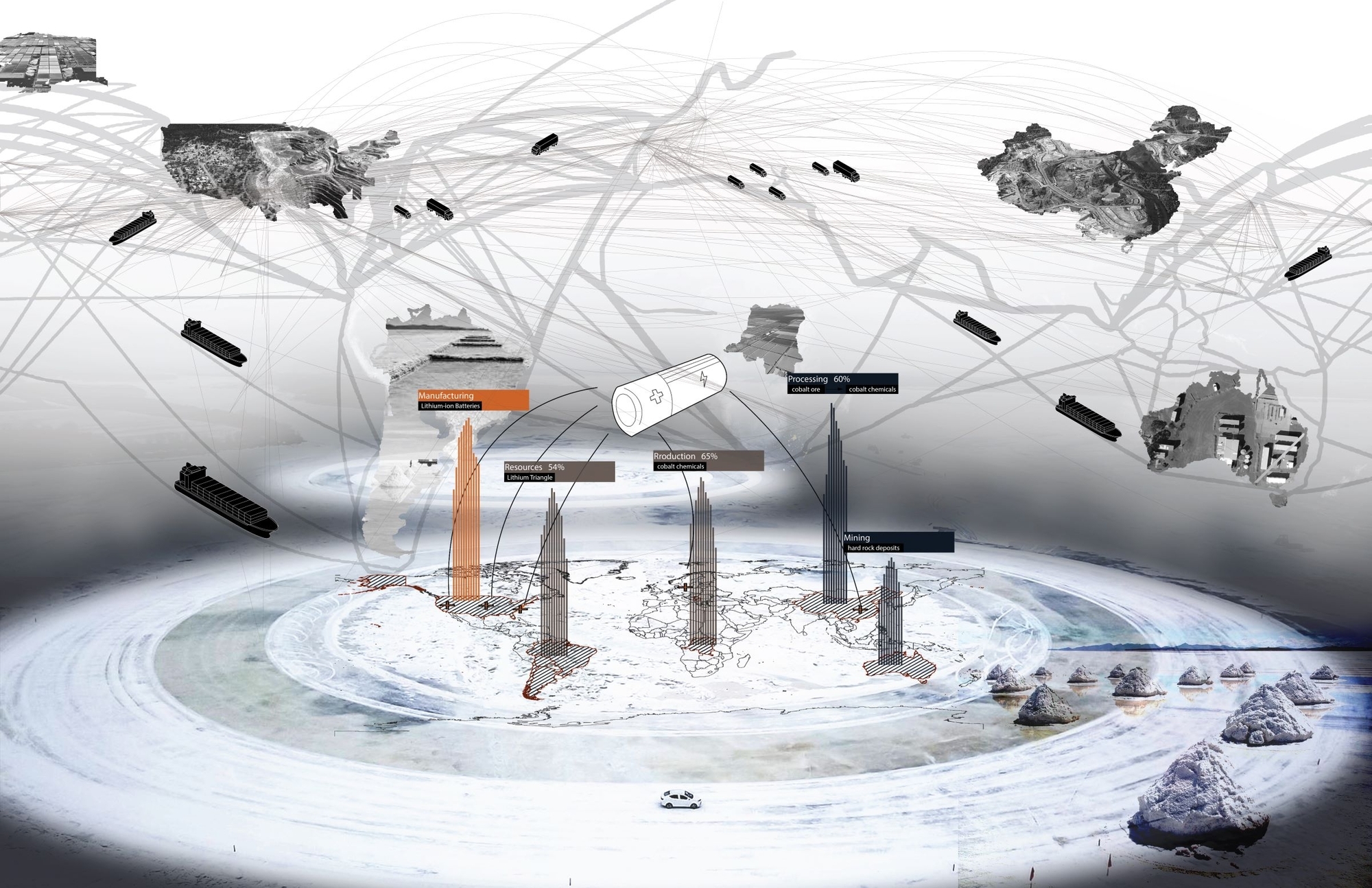So-called clean technologies such as lithium batteries and electric vehicles, wind turbines and solar panels, are made of minerals extracted from the Earth, manufactured in factories that still use dirty energy, and shipped through a carbon-intensive logistic network. Each of these nodes are sites of environmental harm, violations of indigenous rights, and labor exploitation and repression.
Lithium-ion batteries (LIB) are a key technology in the ongoing energy transition. Nearly all mobile electronic products, including cell phones, tablets, laptops, electric vehicles, vapes, E-bikes, hoverboards, electronic toothbrushes, toys, and many other devices, contain a LIB. The technology allows the internal batteries to be regularly recharged for years rather than regularly discarding and replacing exhausted batteries. The first rechargeable lithium-ion battery, sold by Sony, hit public markets in 1991.
By 2007, LIBs were becoming commonplace in mobile electronic devices. iPhones and analog wristwatches alike began to integrate them into their product design. Chemists, physicists, and electrical engineers continue to improve on the battery life compared with the weight of lithium ion batteries, a term known as Energy Battery Density, at an estimated 5% per year—innovations that bring longer battery life and lighter devices.

Elemental lithium is ensnared in the globally extractive web of mining, shipping, speculation, and deployment in “green” technologies. Unpacking how lithium mining operations are deployed in similar fashions to oil and gas mining will be imperative to ensure that core technologies of the energy transition (solar panels, electric vehicles, etc.) are not simply greening extractive practices for the 21st century.
For all the praise Lithium-Ion Batteries have received, concerns over their environmental impacts have grown as the core element, lithium, increases in demand.
However, the countries with the highest rates of mined lithium are not necessarily those with the greatest reserves. The U.S. Geological Survey posits that 80 million tons of lithium are scattered around the globe, with South America accounting for more than half of that figure. Bolivia alone holds over a quarter (21 million tons) of the world’s lithium supply. Along with Argentina and Chile, Bolivia is home to what is known as the “lithium triangle”, though only Chile has been successful in establishing a robust lithium mining industry.
Several years after the global (re)awakening to the importance of rare earth elements and the hazards associated with their production, the relationship between its industries and society, broadly defined, remains troubled in practice, poorly-conceived in policy, and under-examined in the social science literature.”
Despite national resource reserves, private companies and individual investors own and operate much of the region’s lithium extraction, processing, and shipping network—and they alone stand to benefit from the enormous revenues resulting from increasing demand for lithium ion batteries. The five largest lithium mining companies -Jiangxi Ganfeng Lithium (China), Albemarle (US), Tianqi Lithium (China), Solciedad Química y Minera (Chile), Mineral Resources Limited (Australia)-when taken together have a market capitalization of 67.94 billion dollars.
Commodity speculation creates demand for new markets of lithium, and gives rise to eco-nationalist concerns over lithium sourcing, a concern the Biden Administration is ready to weaponize in the name of the Climate Crisis. Recently, a new mining operation in Utah seeks to provide American-mined lithium as part of Biden’s commitment to fight the Climate Crisis while creating American jobs.


